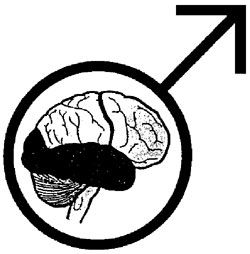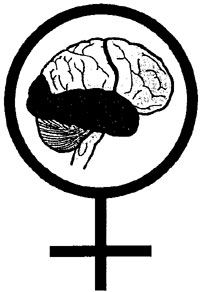The Gender Continuum
©Arlene Taylor PhD
In The Essential Difference: The Truth About the Male and Female Brain, the author presented a Gender Continuum that he says encompasses 95% of the human brains on this planet. It is designed to portray the differences between the qualities of systemizing and empathizing.
Three broad bands of individuals encompass about 95% of the population in terms of brain type, although about 5% of brains will fall outside these three groups based on the way in which the brains developed during gestation:
- Systemizing is stronger – typically equated with a male brain
- Empathizing is stronger – typically equated with a female brain
- Systemizing and empathizing functions are equally represented
At one end of the Gender Continuum you would find the extreme hyper-male systemizing brain, while at the other end you would find the extreme super-female brain.
Gender Continuum
![]() 95% of the population
95% of the population![]()
Systemizing Brain | 50-50 | Empathizing Brain
|
Higher level in the typical male brain so more associated with the male brain | May have equal levels of both qualities | Higher level in the typical female brain so is more associated with the female brain |
Helen Fischer, author of The First Sex, wrote that placement on the Gender Continuum may depend partly on the amount and timing of hormones to which the fetus was subjected during pregnancy.
Since the body housing does not necessarily match the type of brain that resides therein, the Gender Continuum could contain females with male-differentiated brains, males with female-differentiated brains, and, of course, individuals with ambiguous or more androgynous brain-body differentiation.
Whether or not your brain would register on this Gender Continuum (and some day there may be an assessment that can discover this with some level of certainty), the concept and information may be helpful as you relate with others.
According to Dr. Johnson in The Sexual Spectrum: Why We’re All Different, the brain actually has two separate neural pathways for masculine and feminine behaviors, making them independent of one another. In terms of psychological masculinity and femininity, some checklists give an individual two scores: one indicating degree of masculinity and one indicating degree of femininity (because it is believed that most human are a mix of characteristics). If an individual is very masculine or very feminine, one score could be high and the other low. If the individual was extremely androgynous both scores could be similar.
Brain type appears to be able to exist independent of chromosomal complement. Since the body housing does not necessarily match the type of brain that resides therein, the Gender Continuum could conceivably contain individuals with a female body and male-differentiated brains, individuals with a male body and female-differentiated brains, and, of course, individuals with ambiguous or more androgynous brain and/or body differentiation.
NOTE: Studies of fetal rats, mice, and guinea pigs show that regardless of chromosomes present, their brains can be altered based on the type/amount of hormones that are present during gestation. The same may be true for human brains, as well. Science has not yet evolved in terms of study modalities to permit prospective longitudinal studies of gender brain differences including that of sexual brain orientation. This means that what a child appears to be at birth (girl or boy) in terms of external genitalia doesn’t always match either the chromosomal pattern or brain type.
Females may utilize some specific right hemisphere functions (e.g., three-dimensional spatial visualization) less efficiently, although this may be related in part to nurture (e.g., a lack of field independence at a time when spatial visualization functions could have been developed and honed).
Males tend to have more field independence during childhood, which helps to hone skills such as three-dimensional / spatial visualization.
A summary table follows:
Female Brain | Male Brain |
• A female-style of brain function is considered to be the default position in terms of brain development. | • The presence of a “Y” chromosome calls for the mother’s androgens to give the brain a chemical-hormonal bath designed to alter its development and function. If everything goes right, the male fetal brain is exposed to male hormone levels that are four times higher than levels present during childhood. |
• The left hemisphere is believed to mature earlier, which gives girls an advantage from kindergarten through at least middle school. | • The right hemisphere is believed to mature earlier. This is interesting in view of the fact that males are socialized to the left side of the brain beginning early in life. |
• The brains develop faster and reach a gray-matter peak about age 11. In adulthood it will be slightly smaller and lighter than a comparable male brain. | • The brains develop more slowly and reach a gray-matter peak about age 12. In adulthood it will be approximately 10% heavier. |
• More than twelve areas of size comparison have been identified. Three areas are larger in the female brain (e.g., basal ganglia, language comprehension areas). | • Nine areas are larger in the male brain although the significance of this, if any, is not clear. |



